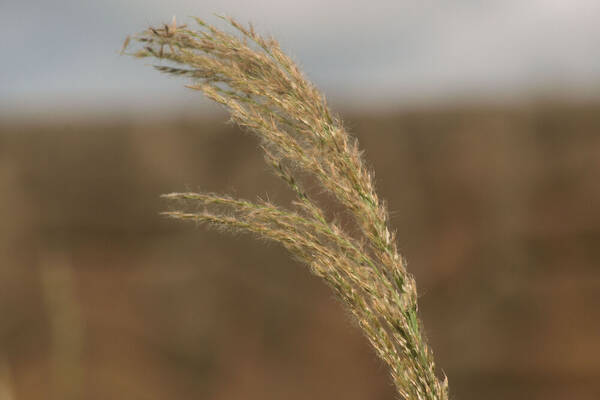Info
Subfamily: Panicoideae
Genus etymology: Digitaria = "having fingers" [Latin] refering to the inflorescence structure
Species etymology: insularis = "from islands" [Latin] refering to this being first described from Jamaica, although this is widespread across South and Central America
Photosynthetic type: C4 (warm season)
Nativity: naturalized - intentional
First recorded in Hawaiʻi: 1913
Map


Inflorescence




Plant

Habit




Spikelets




Landscape


Collar




Description
Plants perennial; cespitose, shortly rhizomatous, with knotty bases. Culms 80-130 cm, erect, with densely villous cataphylls, branching from the lower and middle nodes. Sheaths usually sparsely to densely papillose-hirsute, occasionally glabrous; ligules 4-6 mm, usually lacerate, not ciliate; blades 20-50 cm long, 10-17 mm wide, lax, smooth or scabridulous abaxially, scabridulous to scabrous adaxially. Panicles 20-35 cm long, 2-10 cm wide, with numerous spikelike primary branches; primary branches 10-15 cm, appressed to ascending at maturity, axes not wing-margined or with wings less than 1/2 as wide as the midribs; internodes 3-4.5(6) mm (midbranch), bearing spikelets in unequally pedicellate pairs; secondary branches rarely present; pedicels not adnate to the branches; shorter pedicels 0.7-2 mm; longer pedicels 2.5-5 mm; terminal pedicels 2-5 mm. Spikelets 5.5-8.2 mm (including pubescence), 4.2-5.9 mm (excluding pubescence), narrowly ovate, acuminate. Lower glumes 0.6-0.8 mm; upper glumes 3.5-4.5 mm, 3-5-veined, pubescent on the margins; lower lemmas 4.1-5.7 mm (exceeded 1.5-5 mm by pubescence), narrowly ovate, 7-veined, pubescent between most, sometimes all, of the veins and on the margins, veins usually obscured by a dense covering of golden-brown hairs, hairs 3-6 mm, spreading at maturity, intercostal regions on either side of the midvein glabrous or pubescent with shorter, fine, white hairs, sometimes intermixed with the golden-brown hairs; upper lemmas 3.2-4.5 mm, narrowly ovate, brown when immature, dark brown at maturity, acuminate; anthers 1-1.2 mm. 2n = 36.
(Description source: Barkworth, M.E., Capels, K.M., Long, S. & Piep, M.B. (eds.) 2003. Flora of North America, north of Mexico. Volume 25. Magnoliophyta: Commelinidae (in part): Poaceae, Part 2. Oxford University Press, New York. 783 pp http://floranorthamerica.org/Digitaria_insularis )
Densely tufted perennials; culms erect, 100-150 cm tall, base swollen, pubescent, hard, scaly. Sheaths 12-15 cm long, much longer than internodes, usually papillosepilose with hairs 5-10 mm long, or occasionally only papillose or glabrous, striate, compressed, keeled; ligule membranous, 5- 10 mm long; blades lanceolate, 15-50 cm long, 10-15 mm wide, midrib conspicuous, upper surface scabrous, lower surface glabrous. Inflorescences paniculate, 15-25 cm long, narrow, the branches slender, somewhat nodding, 7-15 cm long, silky pubescent; spikelets paired, narrowly elliptic, 3.5-4 mm long, densely yellowish brown silky pubescent; first glume ovate, scalelike, 0.5-1 mm long, second glume and first lemma subequal, 3-5-nerved, densely silky pubescent, the hairs exceeding the spikelets; second lemma reddish brown, lanceolate, 3-3.5 mm long, apex acuminate; palea similar to lemma. Caryopsis whitish, compressed-ovoid, ca. 1.5 mm long, apex beaked. [2n = 36.]
(Description source: O’Connor, P.J. 1990. Poaceae, pp. 1481–1604. In: Wagner W.L., Herbst D.R. & Sohmer S.H. (eds.)., Manual of the flowering plant of Hawaiʻi. Vol. 2. University of Hawaii Press & Bishop Museum Press, Honolulu )